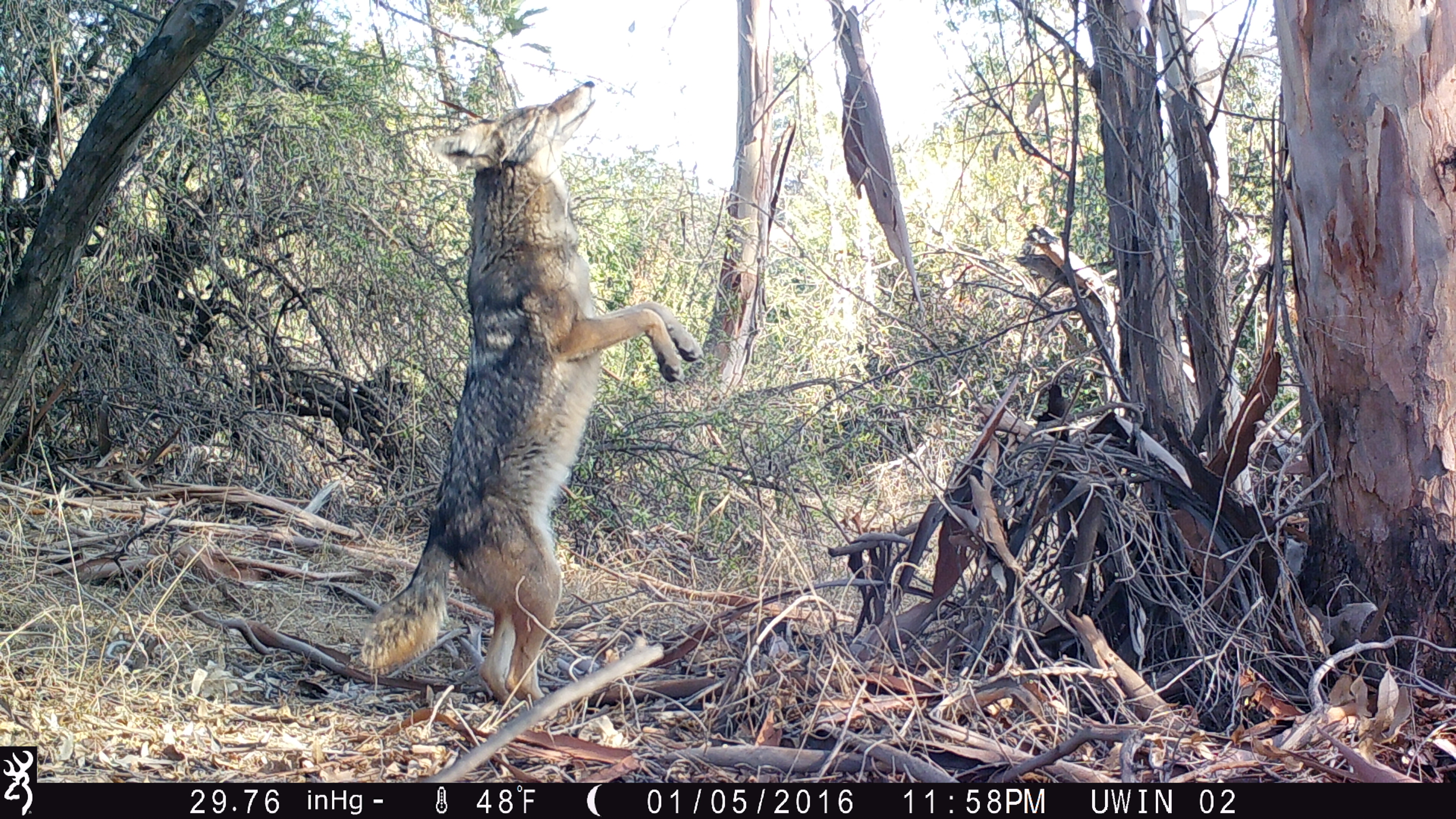News Release
You are viewing ARCHIVED content published online before January 20, 2025.
Please note that this content is NOT UPDATED, and links may not work. For current information,
visit https://www.nps.gov/aboutus/news/index.htm.

National Park Service
|
Subscribe
|
Contact: Ana Beatriz Cholo, 805-370-2385
Thousand Oaks, CA - National Park Service researchers recently installed 39 cameras in and around 30 miles of the Los Angeles River and some of its tributaries in hopes of understanding how wildlife are using urban park lands and, more specifically, the Los Angeles River. (Click here for LA River wildlife photos).“The LA River is a corridor between big tracts of parkland and the city. Its western headwaters, Caballero Creek, Arroyo Calabasas and Bell Creek, all start in the Santa Monica Mountains,” said David Szymanski, superintendent of Santa Monica Mountains National Recreation Area. “What we don’t know is whether animals are using the river and its tributaries to move between patches of habitat. We hope we can find out through this project.”
This is important, Szymanski said, because the biggest conservation challenge facing the Santa Monica Mountains is its isolation. If animals are using the LA River to move between park lands in the mountains and open spaces in the city, that is a positive sign.
The LA River Wildlife Camera Project has been funded entirely through philanthropic support and made possible by the work of volunteers. The Santa Monica Mountains Fund and the Lush Cosmetics Foundation provided funding, and nine groups across the metropolitan area are helping to install and monitor the remote camera traps.
The groups are: Citizens for LA Wildlife (CLAW), Friends of Griffith Park, Friends of the LA River, Heal the Bay, the Los Angeles Conservation Corps, the Nature Conservancy, the National Wildlife Federation, the San Fernando Valley chapter of the Audubon Society, and the Angeles Chapter of the Sierra Club.
The cameras monitor specific locations four times a year for a month each time, easily generating an estimated 5,000 pictures to analyze each round. There are 39 cameras that run along a transect, a line across a habitat or part of a habitat, roughly following the Los Angeles River and a spur up Caballero Creek into Marvin Braude Mulholland Gateway Park. The transect will be divided into 13 sections that each run about 3.1 miles long and about 1.25 miles (or 5 kilometers x 2 kilometers) out from each side of the river.
Each section will host three cameras, which are motion activated. One camera will be in and directly adjacent to the river. The other two cameras have been placed in open space within the section, which happens to be within the Los Angeles River Improvement Overlay (RIO) District.
Similar studies are concurrently being run across the country in other major cities as part of the Urban Wildlife Information Network, a project of the Lincoln Park Zoo in Chicago. By participating in a nationwide project, trends and comparisons can be drawn to further understand urban wildlife and provide data to influence city planning and wildlife management.
Since 1996, the National Park Service has been studying carnivores in and around the Santa Monica Mountains to determine how they survive in an increasingly fragmented and urbanized environment. During the course of the study, biologists have studied more than 356 bobcats, 156 coyotes, and 65 mountain lions.
Santa Monica Mountains National Recreation Area (SMMNRA) is the largest urban national park in the country, encompassing more than 150,000 acres of mountains and coastline in Ventura and Los Angeles counties. A unit of the National Park Service, it comprises a seamless network of local, state and federal parks interwoven with private lands and communities. As one of only five Mediterranean ecosystems in the world, SMMNRA preserves the rich biological diversity of more than 450 animal species and 26 distinct plant communities. For more information, visit www.nps.gov/samo.
###
Last updated: July 31, 2019
